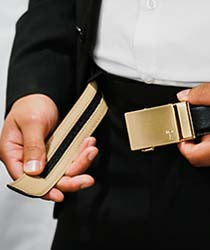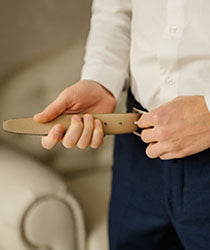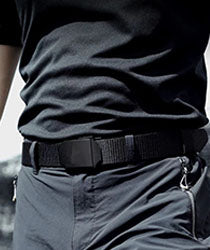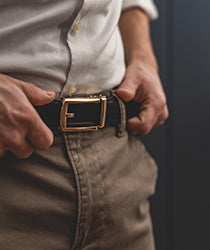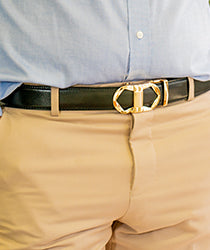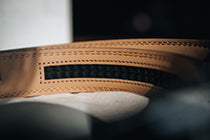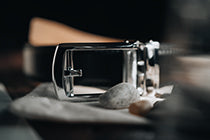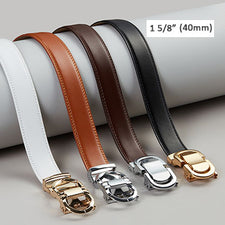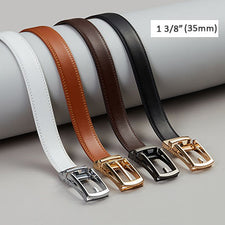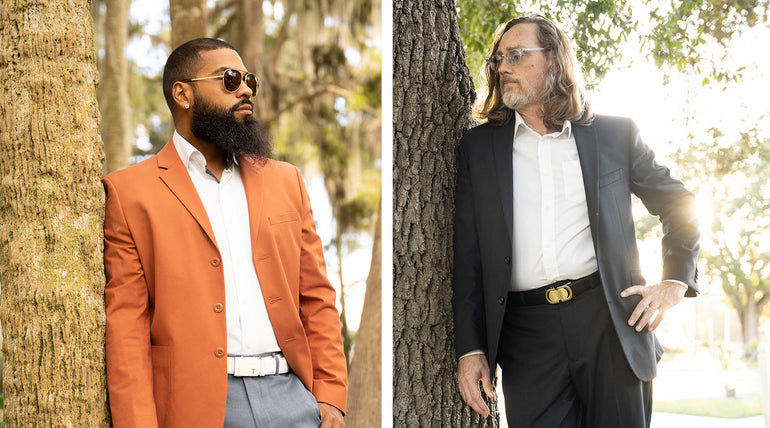When it comes to fashion, every detail matters, and belts are no exception. A well-fitted belt can instantly elevate your outfit and provide a polished look. However, selecting the right belt for your body type is crucial to ensure a perfect fit and a flattering appearance. By understanding your body type and considering various factors, such as belt width, material, buckle style, color, and pattern, you can make an informed decision that enhances your overall style.
I. Understanding Body Types
Before we delve into the specifics of belt selection, let's familiarize ourselves with different body types commonly found in men. While body types can vary, they generally fall into three categories: slim, athletic, and larger body types. Identifying your body type will serve as a foundation for choosing the most suitable belt.
II. Belt Width and Body Type
The width of the belt plays a crucial role in balancing your body proportions. For slim body types, narrower belts are recommended to create the illusion of a more substantial frame. On the other hand, athletic or larger body types can opt for wider belts to maintain a proportional look. Understanding how belt width relates to your body type will guide you in selecting the ideal belt width.
III. Belt Material and Body Type
Choosing the appropriate belt material based on your body type is essential for both comfort and style. Leather belts are versatile and suitable for most body types, providing durability and a classic appearance. For formal occasions, consider full-grain leather belts. If you have a slim body type, consider woven or fabric belts to add texture and interest. It's important to consider the overall look and feel of the material in relation to your body type.
IV. Belt Buckle Styles and Body Type
The style of the belt buckle can significantly impact your overall appearance. For slim body types, smaller and more streamlined belt buckles work best, as they maintain a sleek and proportional look. Athletic or larger body types can experiment with larger belt buckles to add visual interest and balance. From simple and minimalist designs to more intricate and decorative styles, choose belt buckles that enhance your body type and personal style.
V. Color and Pattern Selection
When selecting belt colors, it's crucial to consider your body type and the overall color palette of your outfit. Generally, matching the color of your belt to your shoes creates a cohesive and polished look. However, you can also choose complementary colors to add visual interest. Patterns, such as stripes or embossed designs, can also enhance your style, but ensure they do not overpower your body type.
VI. Belt Sizing and Body Type
To ensure a comfortable fit, determining the correct belt size is essential. Use a measuring tape to measure your waist or the waistband of your pants, and add a few inches to determine the appropriate belt size. Keep in mind that different brands may have variations in sizing, so it's always advisable to consult the brand's sizing chart. Adjusting the belt size correctly ensures a snug fit that complements your body type.
VII. Tips for Different Body Types

Belt Selection Tips for Slim Body Types
- Opt for narrower belts to add the illusion of width.
- Experiment with textured belts, such as woven or braided styles.
- Consider lighter colors to create contrast and draw attention.
Belt Selection Tips for Athletic Body Types
- Wider belts help maintain proportion and balance.
- Choose belts with decorative buckles to add interest.
- Consider darker colors to create a slimming effect.
Belt Selection Tips for Larger Body Types
- Wide belts provide balance and create a defined waistline.
- Avoid overly elaborate belt buckles that draw attention to the midsection.
- Choose darker and solid colors to create a streamlined appearance.

VIII. Styling Tips
Now that you have an understanding of how to choose the perfect men's belt for your body type let's explore some styling tips to complete your look:
- Formal occasions: Pair a classic leather belt with a suit or dress pants.
- Casual outfits: Opt for fabric or canvas belts with jeans or chinos for a relaxed and stylish look.
- Experiment with different textures, colors, and patterns to add personality and variety to your outfits.
IX. Maintaining Your Belt
Proper care and maintenance of your belts ensure their longevity and preserve their appearance. Here are some tips to keep in mind:
- Regularly clean leather belts with a damp cloth and mild soap.
- Avoid exposing belts to excessive moisture or extreme temperatures.
- Store belts in a cool, dry place to prevent damage and deformation.
X. Conclusion
Choosing the perfect men's belt for your body type is a thoughtful process that can significantly enhance your style and overall appearance. By considering factors such as belt width, material, buckle style, color, and pattern, you can ensure a flattering and confident look. Remember to understand your body type, experiment with different options, and always prioritize comfort and personal style. With the right belt, you'll not only keep your pants up but also elevate your fashion game.
XI. FAQs
1. How do I measure my belt size accurately? To measure your belt size accurately, use a measuring tape and wrap it around your waist or the waistband of your pants. Add a few inches to the measurement to determine the appropriate belt size.
2. Can I wear a wide belt if I have a slim body type? Yes, you can wear a wide belt if you have a slim body type. However, it's important to ensure that the belt is proportional to your frame and does not overwhelm your outfit.
3. What materials are recommended for formal belts? For formal belts, it's recommended to choose full-grain leather or other high-quality leather materials. They provide durability and a sophisticated look suitable for formal occasions.
4. Should the color of my belt match my shoes? Matching the color of your belt to your shoes creates a cohesive and polished look. However, you can also choose complementary colors to add visual interest and create contrast.
5. How often should I replace my belt? The lifespan of a belt depends on various factors such as the quality of the material and the frequency of use. It's advisable to inspect your belt regularly for signs of wear and tear and replace it when it starts to show significant damage or loss of functionality.
Ready to dress sharp and command respect with the right accessory? Click here to discover Tonywell, the Professional Accessories Supplier.

